A photographer explores sustainable farming through different communities.
Lottie Hedley knows her way around a farm. The photographer grew up in Kahutara, a rural community in the Wairarapa, at the bottom of the north island of New Zealand. She lived on her parents’ dairy farm until she left the island to go to university. But it was only much later, when she was studying in the United States, that she started her long photographic exploration of sustainable farming. As part of the ongoing project, she spent time with an Amish family in northern Maine, documenting their traditional farming techniques and questioning what we could all learn from their relationship with the land. The result is these peaceful yet stunning photographs. She joined us from Auckland.
Roads & Kingdoms: How did you meet the Hilty family?
Lottie Hedley: I was in Maine for the summer of 2010 to go to the Maine Media Workshops and ended up staying for a year to go to school. The first project I did was on an organic potato and seed farming family who live in Aroostook County. Jim Gerritsen, the dad, would often talk about the farming philosophies he had. One day he mentioned being influenced by his Amish and Mennonite neighbors.

R&K: How so?
Hedley: The Gerritsens are organic farmers, so some of their Amish neighbors’ practices relating to sustainability and looking after the land for future generations are very similar in outlook. I can’t remember which practice in particular we were talking about in that conversation, but it could have been relating to cover crops and fertilizers that are organic and sustainable.
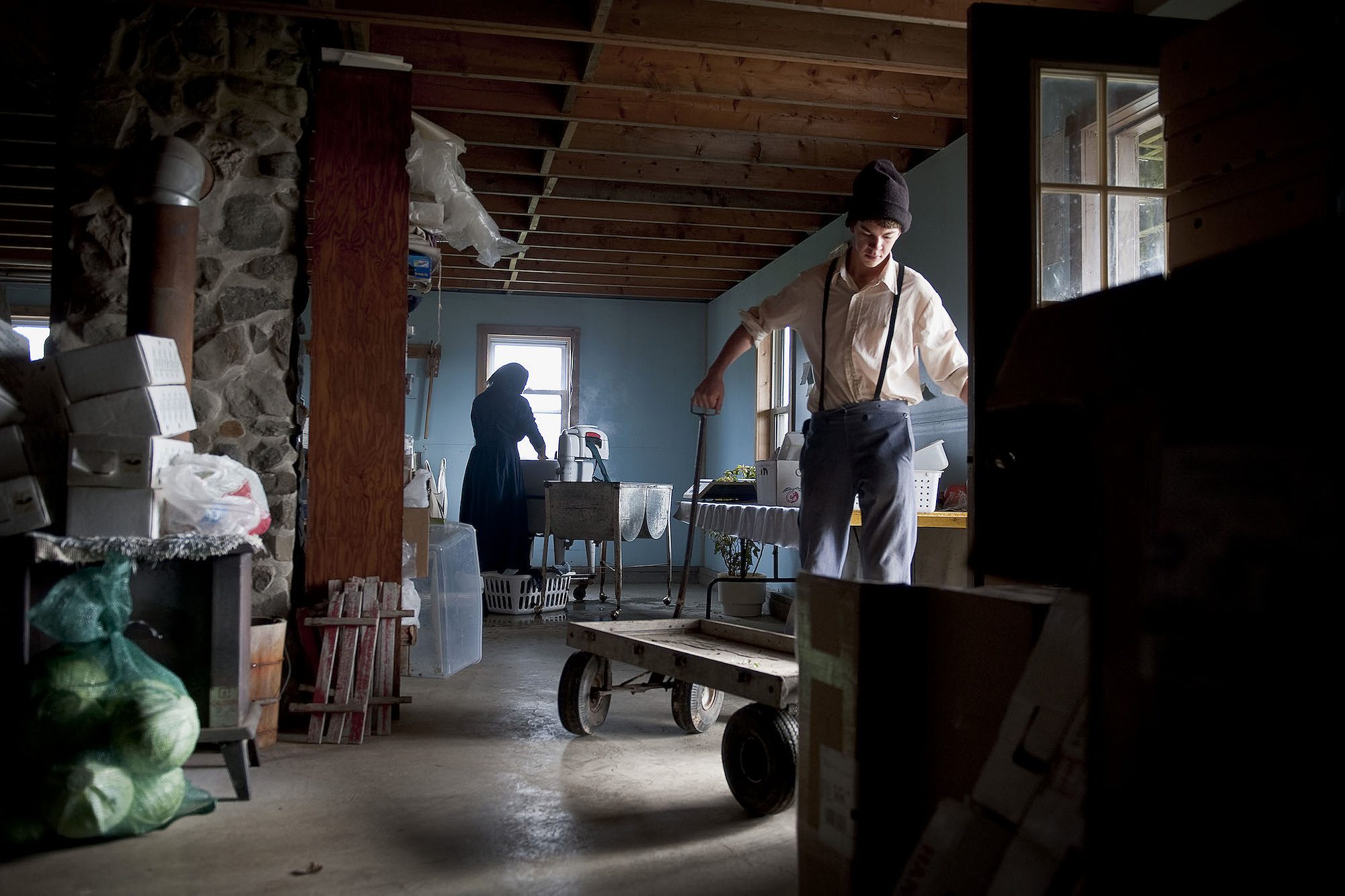
R&K: Why were you interested in sustainability and farming while you were in the US?
Hedley: I was looking for stories in the Rockport and Camden area of Maine and went to an orchard to speak to the owner and some neighbors who’d dropped by. They were talking about harvest season in Aroostook County, a few hours away, and how the schools had harvest holidays so the students could help. Obviously with larger farms and mechanization, it wasn’t as necessary as it used to be and so the practice of school harvest break seemed to be changing. [But] I didn’t realize I had any interest in farming stories until I got there and started photographing.

At the end of that [first] visit, they asked me when I was thinking of coming back, and it felt like we were developing a friendship
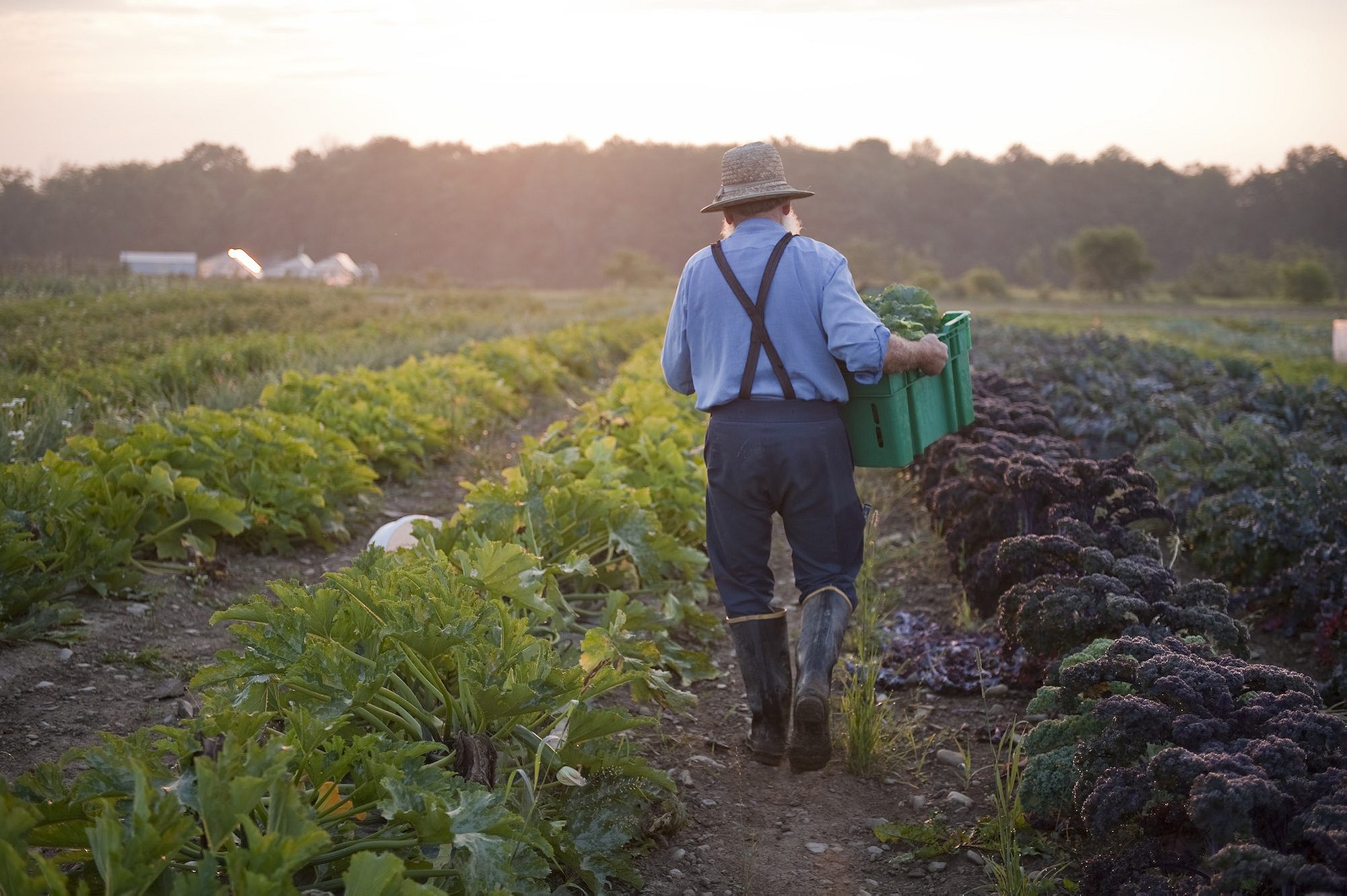
R&K: Was it hard getting access to the Hilty family?
Hedley: It started with Jim. I had made the Gerritsens a family album of our time together and on a trip to a conference he shared it with Milo and told me I could write to them. Because they live many hours away and they don’t have a phone or email, obviously, our main mode of first contact was written letters. So I started writing to them and said that I would really like to meet them, why I was interested in the farm, where I came from. They wrote back and said I could come meet them.
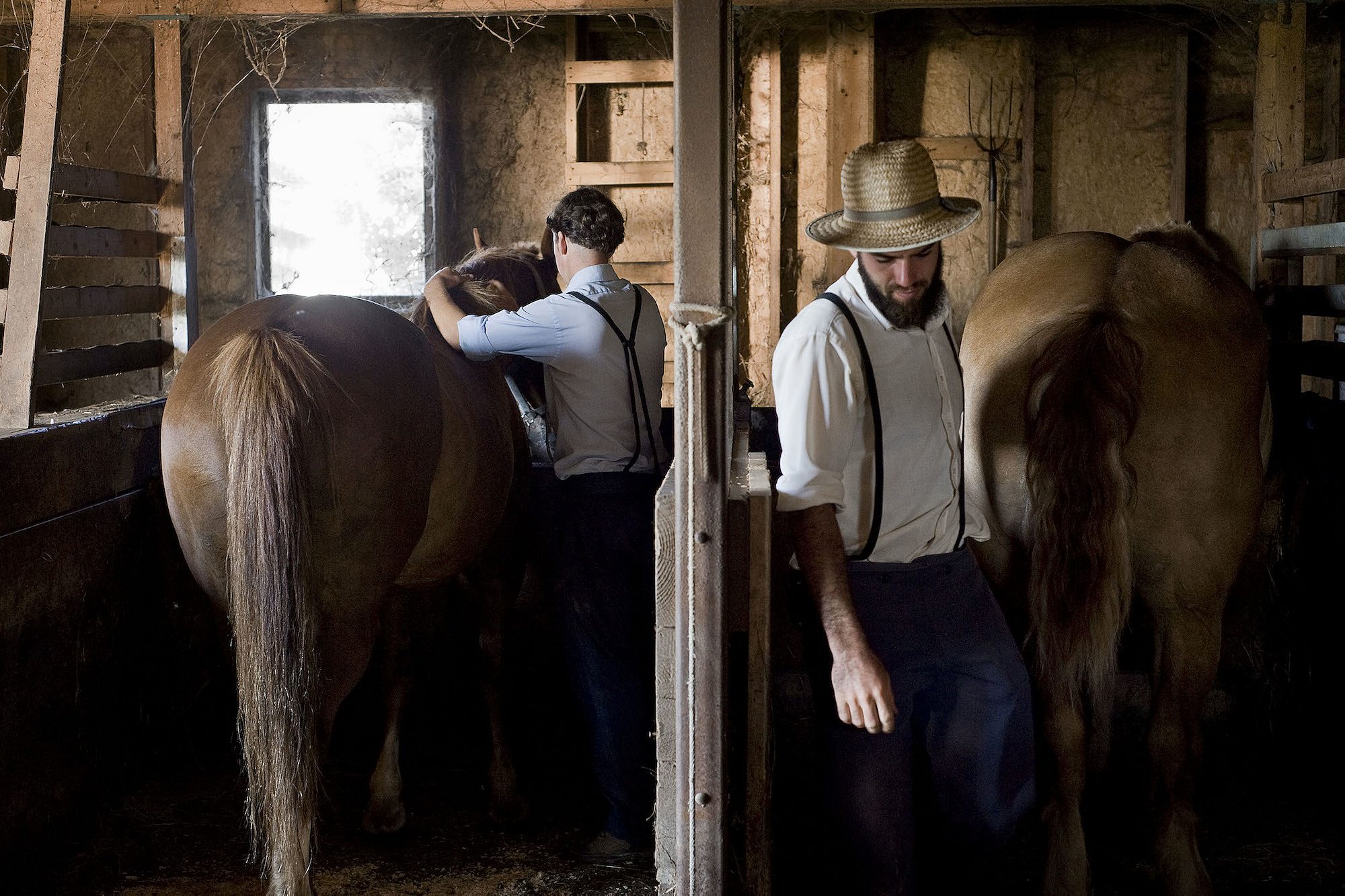
R&K: Did it take much convincing?
Hedley: I guess it was more about explaining my intentions and then giving them time to think about it. We talked about farming, sustainability, looking after the land for future generations and how I wanted to try and show that in images through various farming stories, including theirs. We talked about how I had stayed with Jim and Megan and their family when I’d photographed their story, and about my style of photography—how I wouldn’t ask them to pose. After the first meeting, I obviously hoped they would say yes, but it was left very open to them to decide. I was thrilled to get the first letter inviting me up to stay for a few days. At the end of that visit, they asked me when I was thinking of coming back, and it felt like we were developing a friendship.

R&K: What was the feeling like when you arrived there for the first time?
Hedley: It was black fly season! It was hot and there was a lot of work to do so it was busy. Although I was initially nervous because I didn’t want to accidentally offend anyone—I wanted to make sure my clothes were modest enough, etc.—it was just like being on any farm where you all muck in and help. So as soon as I got to work, it just felt like we were all working towards the same purpose: to get the job done. But it was exhausting work, from 5am until dinnertime. They work so hard. Though I loved that we’d always stop for breakfast, lunch and dinner and all eat together.

R&K: Did you stay with this one family the whole time there?
Hedley: My focus was Milo and his family so I spent most of my time with them—so Milo, Velma, Ellen, Betty, Elmo and Walter, as well as the eldest brother who is married with children and lives just down the road. Betty runs the market store to sell all the vegetables and cakes, so I would see other people there. On the first visit, Betty and Ellen took me along to a girls evening where we ate and talked and played this fabulous card game, which I’ve forgotten the name of, with a lot of the other girls from the community.
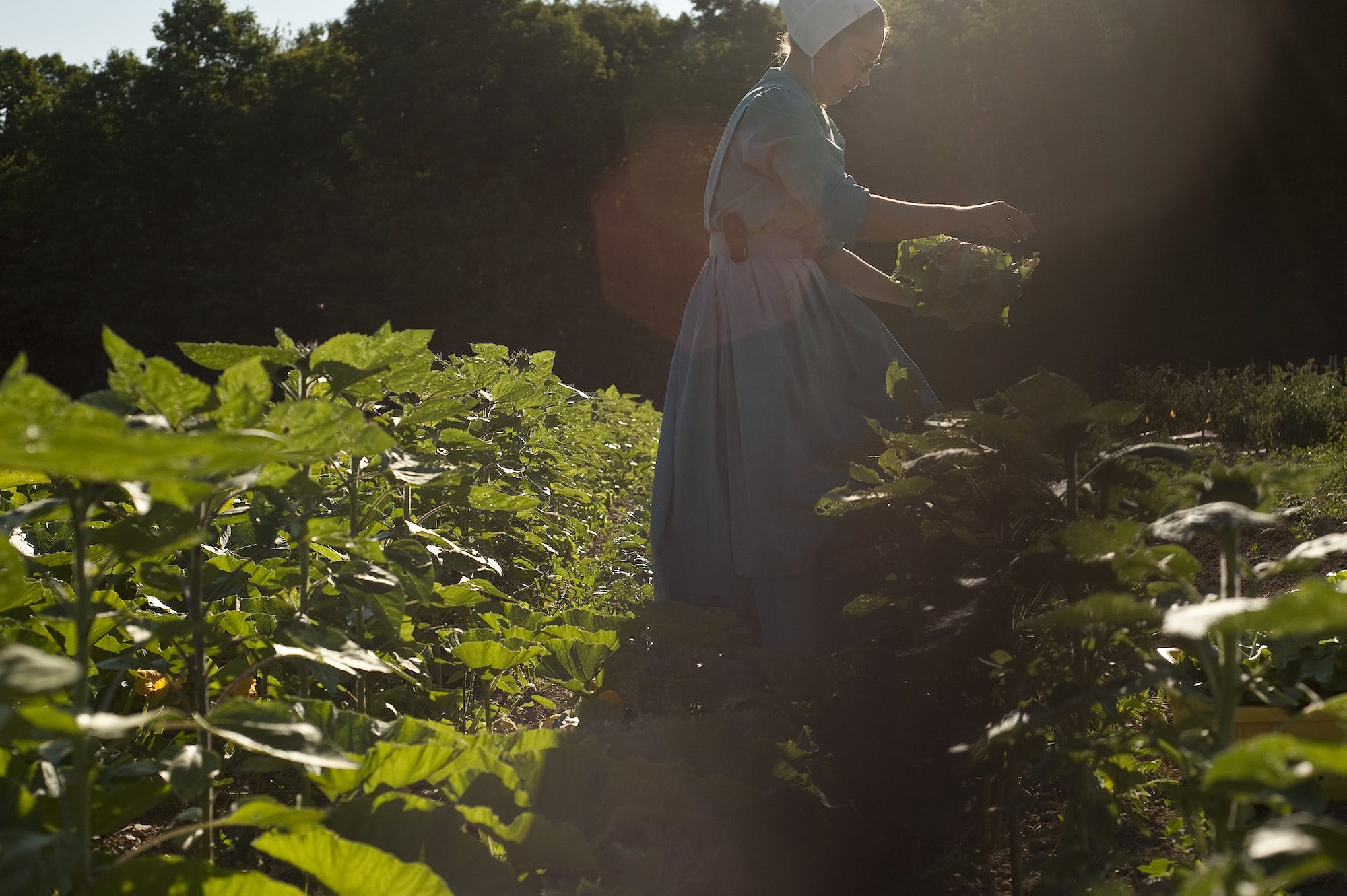
Hedley: I’m sure that as our relationship develops, I will ask them. If they were fearful or worried they never made me feel like they were. I think what was interesting was how their interest in what I was doing increased. In particular I’d talk about how nice the light was and how excited I was that we were planting in the late afternoon, evening light. I thought nothing of my random ramblings until Walter asked me once whether the light was nice now and what that would look like in the photos. We’ve used the pictures for various conferences Milo has spoken at and Betty will use them in a cookbook she is working on. Whenever I come visit, I always bring new photos and they sit down and share them and laugh at photos I’ve taken of Walter tired on a couch or someone else shelling peas with the kids.
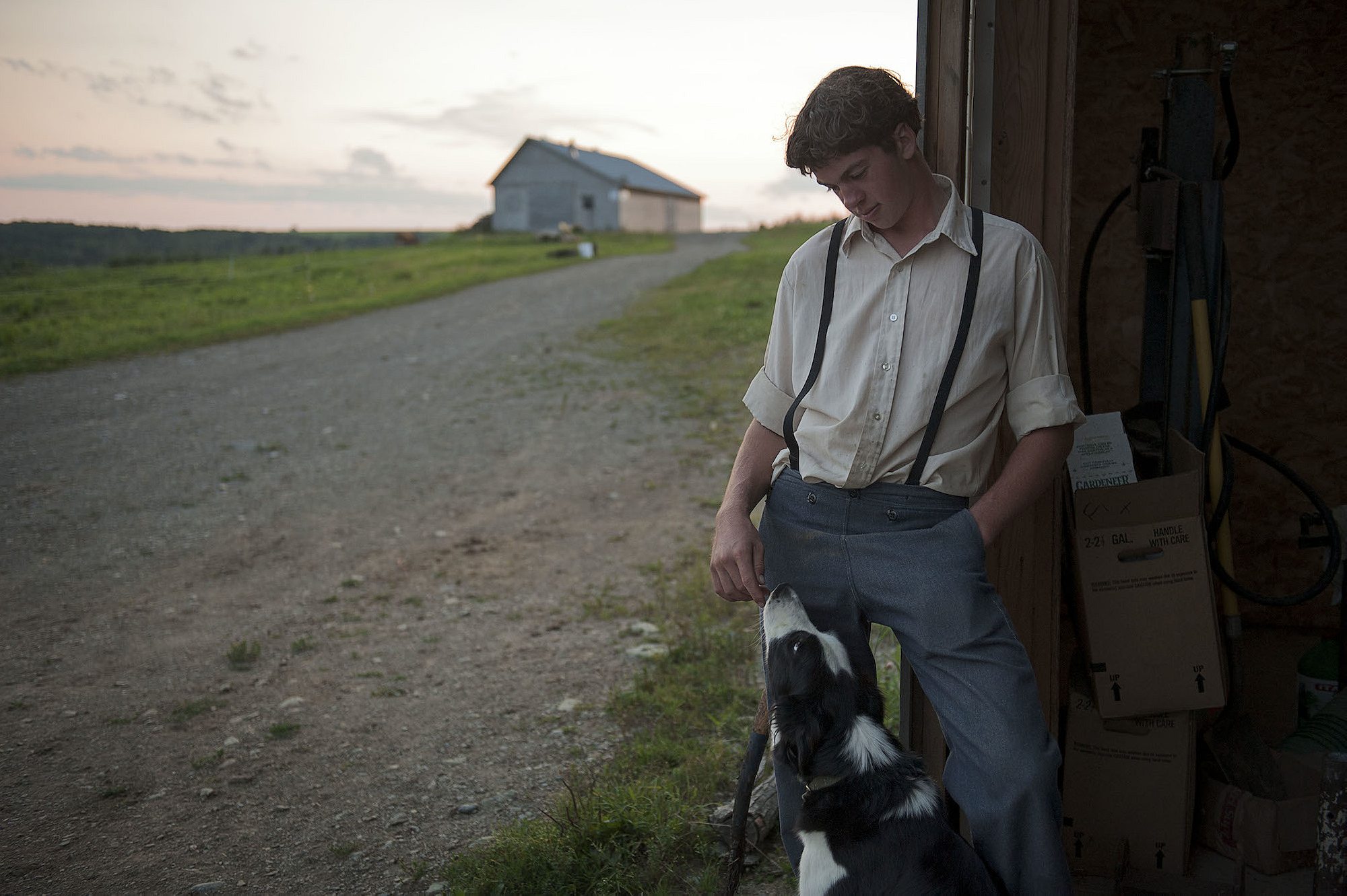
R&K: What are the conferences that Milo participates in?
Hedley: Just the same as any farmer in the area really. If there is something local and pertinent he will go along. We made some handouts and a presentation for a talk he was giving about how to save seeds and growing your own vegetables.
R&K: I think that’s one of the things that really interests me in your project – the overlap between the organic farming movement and the very traditional Amish ways…. What do you think today’s farmers can learn from Milo and his family?
Hedley: I think the thing that interests me the most is the philosophy behind it all. The idea that people want to look after the land so that future generations aren’t cleaning up the mess they’ve left behind. I think that philosophy can be applied to so many elements of our lives, not just to people with land.
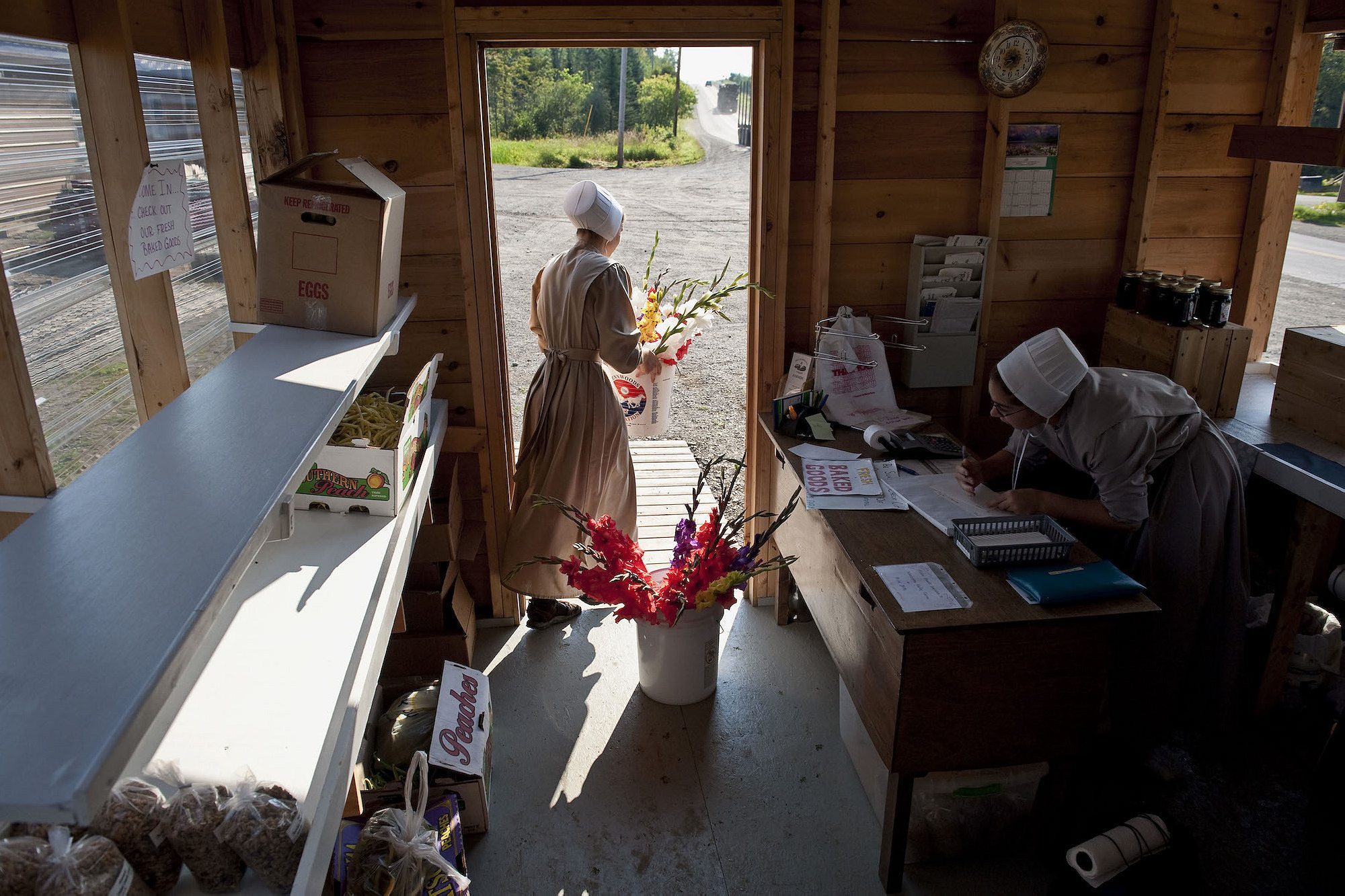
R&K: And that’s what you are exploring in this larger project, right?
Hedley: Yes, I hope to keep working with the families I’ve met in Maine and also to make new stories in New Zealand around the idea of sustainability and the role of the next generation.
One hope with the project is that people might be inspired to either figure out where their food comes from or to put their hands in soil themselves

R&K: Do you think there is a big difference between the US perspective and the one in NZ?
Hedley: That is a really hard question. The US has such a large and diverse agricultural history and New Zealand, as an agricultural exporting country, has its own very particular background. I think there is a global consciousness about and a move towards being more sustainable in our building and farming.

R&K: But so far as your exploration goes, are you optimistic about people’s relationship with the land?
Hedley: I’ve been working on a cookbook since I got back to NZ and it has been a very optimistic project. We’ve met with 80 chefs, cooks and bakers and a lot of them talk about local ingredients and about local producers being small and niche. A lot of them even have their own gardens from which they get their produce. I think that is very poetic and we can take a lot from that. Eat and buy local and where you can, grow you own. Simple. One hope with the project is that people might be inspired to either figure out where their food comes from or to put their hands in soil themselves.
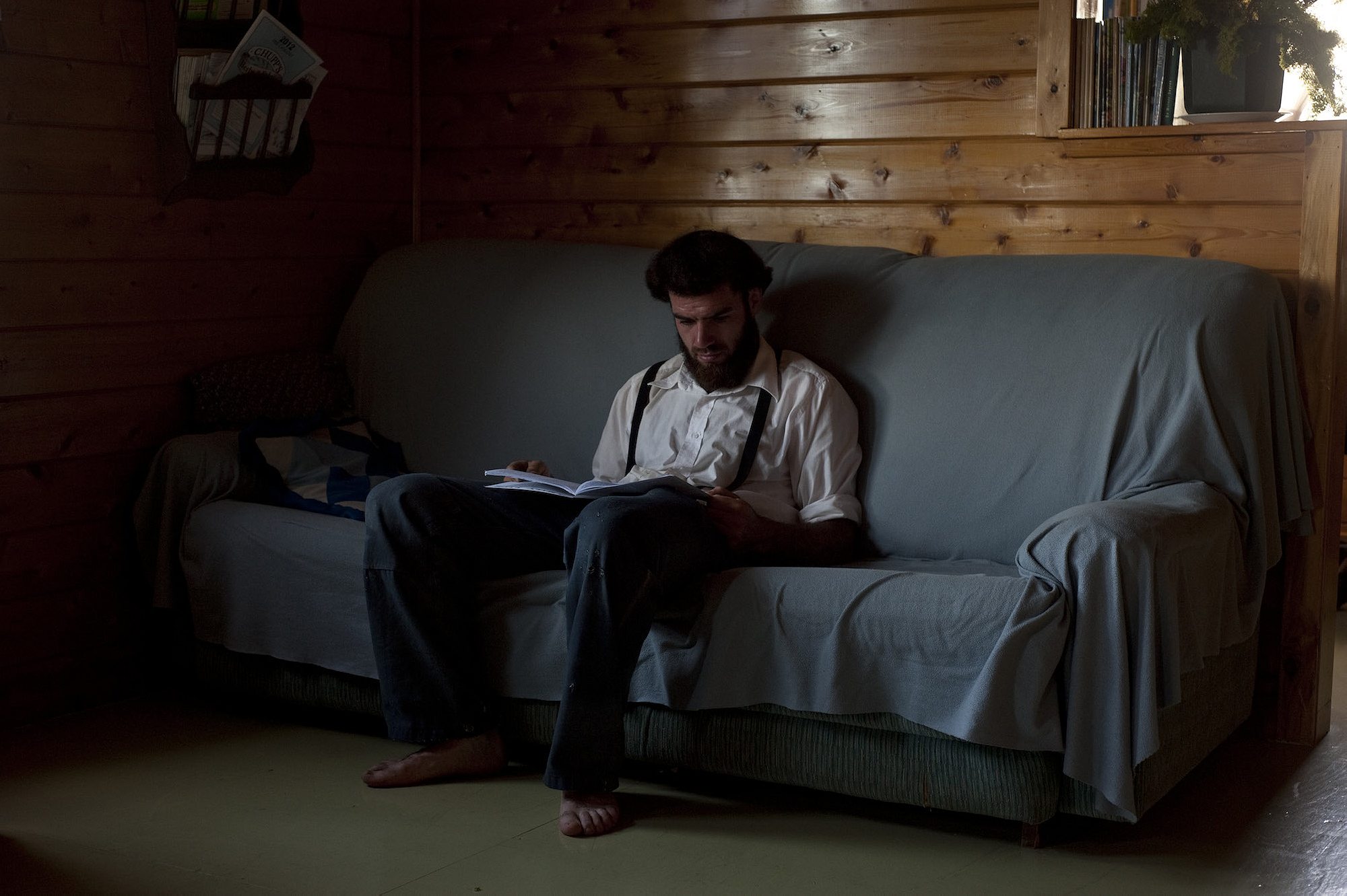
R&K: Speaking of that, you said you worked in the farms with the families… How did you divide your time between shooting and working? Did you always keep a camera with you?
Hedley: I did. I met this great photographer in Maine called Jon Edwards. He had done this fabulous project about a seaweed farmer and he talked about how he’d work and when the light looked good, he would stop and photograph. I guess I stored it in the back of my head and realized that was what I was doing on the farm. The light was pretty harsh most of the day and so it made sense to help until inspiration hit and then I’d drop out and make some pictures and then help again. I’d always have my camera nearby.
R&K: I’m sure it helped that you knew your way around a farm too…
Hedley: Yes, that helped for sure. I think it means that even though you are from another country and perhaps another culture, if you value similar things, you are talking the same language. Getting your hands dirty is part of that language.
You can see more of Lottie Hedley’s work here.